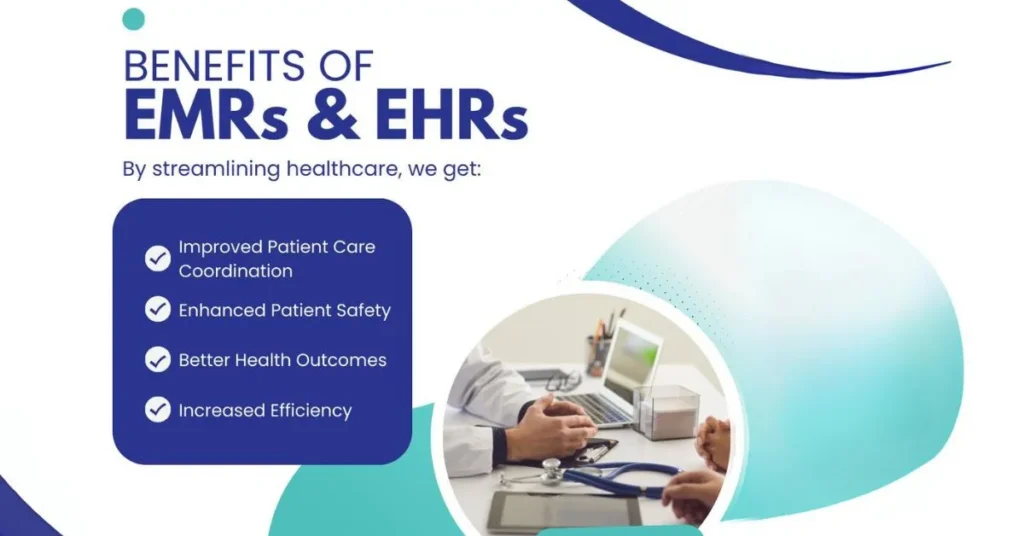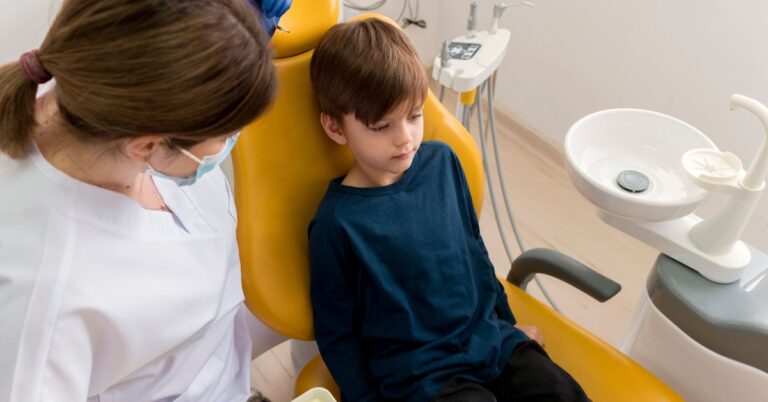How to Leverage EMRs and EHRs Without Sacrificing Patient Care
The integration of EMRs and EHRs is transforming healthcare, but how do we ensure that patient care remains the top priority? With increasingly holographic digital records, it challenges health care experts to make decisions between the benefits of technologies and the need to keep and improve patient care. Here is how to leverage electronic medical records (EMRs) and electronic health records (EHRs) effectively without compromising the quality of patient care.
Understanding EMRs and EHRs
Understanding the difference between EHRs and EMRs is essential in healthcare for effective patient care coordination and engagement.
Electronic Medical Records (EMRs) are the digital version of paper charts in a clinician’s office. They contain the medical and treatment history of the patients in one practice. EMRs assist providers in tracking data over time, identifying patients for preventive visits and screenings, and monitoring patients.
Electronic Health Records (EHRs) are much more than a repository of data collected in the provider’s office. They represent a more comprehensive view of a patient’s care. EHRs are designed to share information with other healthcare providers, containing data from all clinicians involved in a patient’s care.
Benefits of EMRs and EHRs
EMRs (Electronic Medical Records) and EHRs (Electronic Health Records) streamline healthcare by digitizing patient information, improving coordination among providers, and reducing medical errors. Here are some benefits:
Improved Patient Care Coordination
EHRs facilitate the appropriate sharing of patient information across different healthcare settings, allowing all providers involved in a patient’s care to access the same information. This improves coordination of treatment plans and prevents redundancies in testing and other procedures.
Enhanced Patient Safety
Digital records reduce the potential for errors caused by handwriting and transcription. Alerts and reminders about critical values, allergic reactions, and drug interactions make medical services safer.
Better Health Outcomes
Patients who require screening for cancer and other illnesses, immunizations, and follow-up on chronic conditions such as diabetes and hypertension are tracked more easily through EMRs and EHRs.
Increased Efficiency
Digital records reduce clerical work, decrease paperwork, and raise the general effectiveness of health practices consequently allowing providers an opportunity to spend time with patients.

Challenges in Leveraging EMRs and EHRs
While the benefits of EMRs and EHRs are significant, their implementation and use come with challenges that can impact patient care if not properly managed:
Learning Curve and Workflow Disruption
Setting up and mastering digital systems requires significant training time and disrupts established workflows when transitioning from paper records. The early difficulty that providers might have with navigation could present delays in the care of patients.
Data Privacy and Security Concerns
Various issues linger around the digitization of patient records, particularly regarding the privacy and security of sensitive health information. Health providers have to take care of regulations such as HIPAA to ensure that their patient’s data is safe.
Time Consumption
Entering data into EMRs and EHRs is time-consuming. Hence, it might take away from direct patient interaction. This can lead to providers feeling rushed during patient consultations.
Interoperability Issues
The various EMR and EHR systems often do not communicate well with other systems, creating lapses in access to patient information and affecting care coordination.
Strategies to Leverage EMRs and EHRs Effectively
The strategies that follow can help healthcare providers harness the power of EMRs and EHRs without constituent care being compromised in the process:
Invest in Training and Support
Extensive training programs in EMR and EHR systems are essential for healthcare providers and staff to execute their services effectively. Continuous support and refreshment courses may balance the learning curve with the effective use of those systems.
Optimize Workflow Integration
EMR and EHR can be optimized to meet practice needs and workflow. Customization will decrease disruption and increase efficiency. Engaging clinicians in design and implementation can increase their integration and acceptance.
Enhance Patient-Provider Interaction
Documenting visits during or immediately after the consultation can help address concerns about reduced face-to-face time with patients. This gives back a lot of time returned by scribes and voice recognition software, reducing the load of documentation.
Tighten Data Security Measures
Important security measures, such as encryption, access controls, and frequent audits, must be implemented to prevent breaches of patient information. Of equal importance to the strategy will be staff education in best practices related to data privacy and security.
Focus on Interoperability
When choosing EMR and EHR systems, interoperability should be at the top of the list. The systems should pass industry interoperability standards and allow coordination of care through collaboration with other health organizations about parameters for data exchange.
Leverage Analytics and Decision Support
Most of the EMRs or EHRs include analytic and decision-support tools within their frameworks, which would foster clinical decision-making. It will enable providers to use the tools for making insightful decisions, improving patient outcomes, and quality improvement in general.
Engage Patients in Their Care
Patient portals can offer access to patients’ health record information, thereby increasing the ability of patients to become active participants in their care. Orientation on how to navigate these portals optimizes communication and patient satisfaction.
The Future of EMRs and EHRs in Patient Care
The future of EMRs and EHRs shows promising advancements that will further improve patient care. From a viewpoint of data analysis and application to patient care, much more can be done with the emerging technologies of AI and ML. Predictive analytics allow for the identification of at-risk patients and the tailoring of their treatment plans. AI-powered virtual assistants will help support the providers in adequate documentation and meaningful clinical decision-making.
Moreover, wearable devices and remote monitoring tools integrated with EMRs and EHRs can facilitate the proactive management of chronic conditions with real-time health data and allow timely interventions. As telehealth continues to gain momentum, seamless integration with digital records will be essential for delivering comprehensive and coordinated care.
Conclusion
Leveraging EMRs and EHRs without sacrificing patient care is a complex task that requires careful planning, continuous training, and a focus on both technology and human interaction. Overcoming challenges and using effective strategies in harnessing digital records will ensure healthcare providers improve patient outcomes, enhance efficiency, and uphold the best standards for patients. In a more advanced use of technology in the future, adaptability and patient-centered focus will remain key features of the successful integration of EMRs and EHRs into the healthcare landscape.
FAQs:
How do EMRs and EHRs enhance the coordination of patient care?
The EMR and EHR facilitate a good flow of information concerning patients from one healthcare setting to another. That is, the system allows the various treatment providers for one patient to access the same information. This facilitates coordination of treatment and helps eliminate duplication in testing and other procedures.
What are ways to lighten the burden of documentation on providers?
Scribes or voice recognition software could decrease provider documentation time, allowing more face-to-face time with patients. Also, documenting visits during or immediately after seeing the patient may simplify things.
What are healthcare professionals supposed to do to safeguard the data security of EMRs and EHRs?
Develop definite security measures at every occurrence, not allowing a niche through which the information of a patient could be leaked. This constitutes strong encryption and access controls, regular audits, and training concerning best practices in keeping data private.







